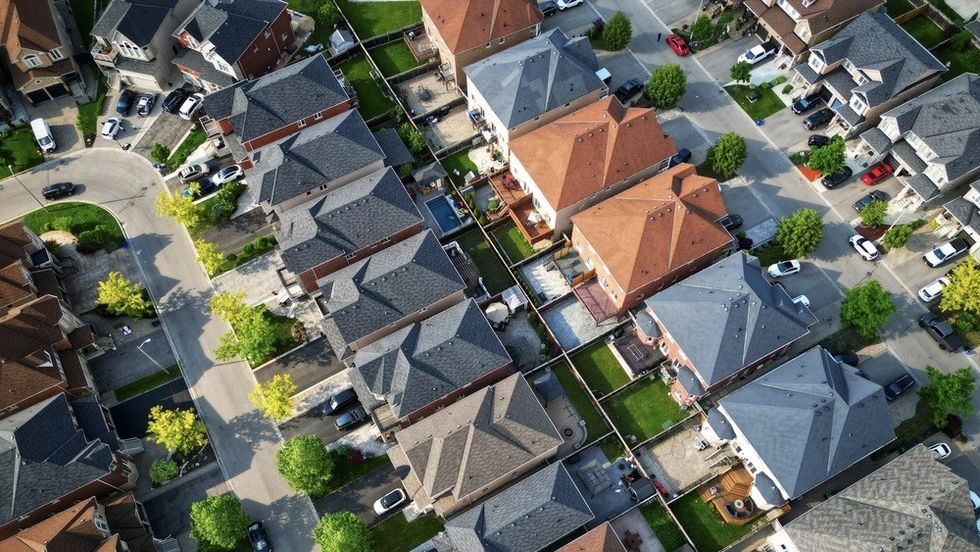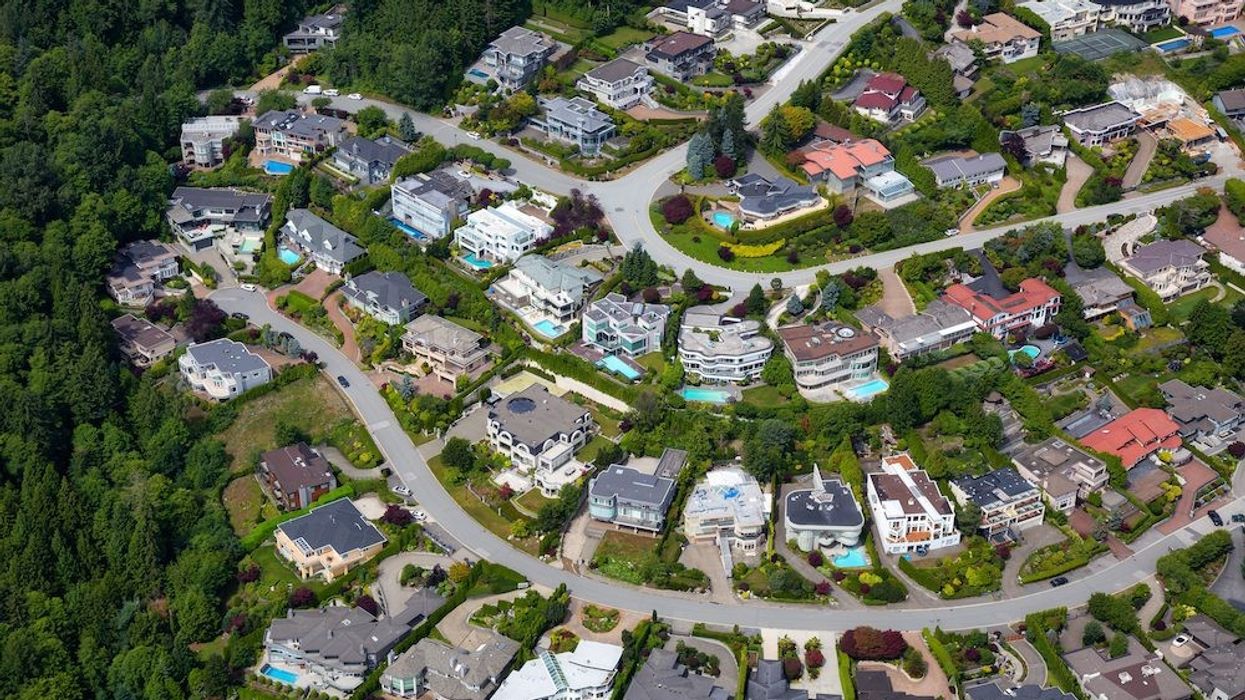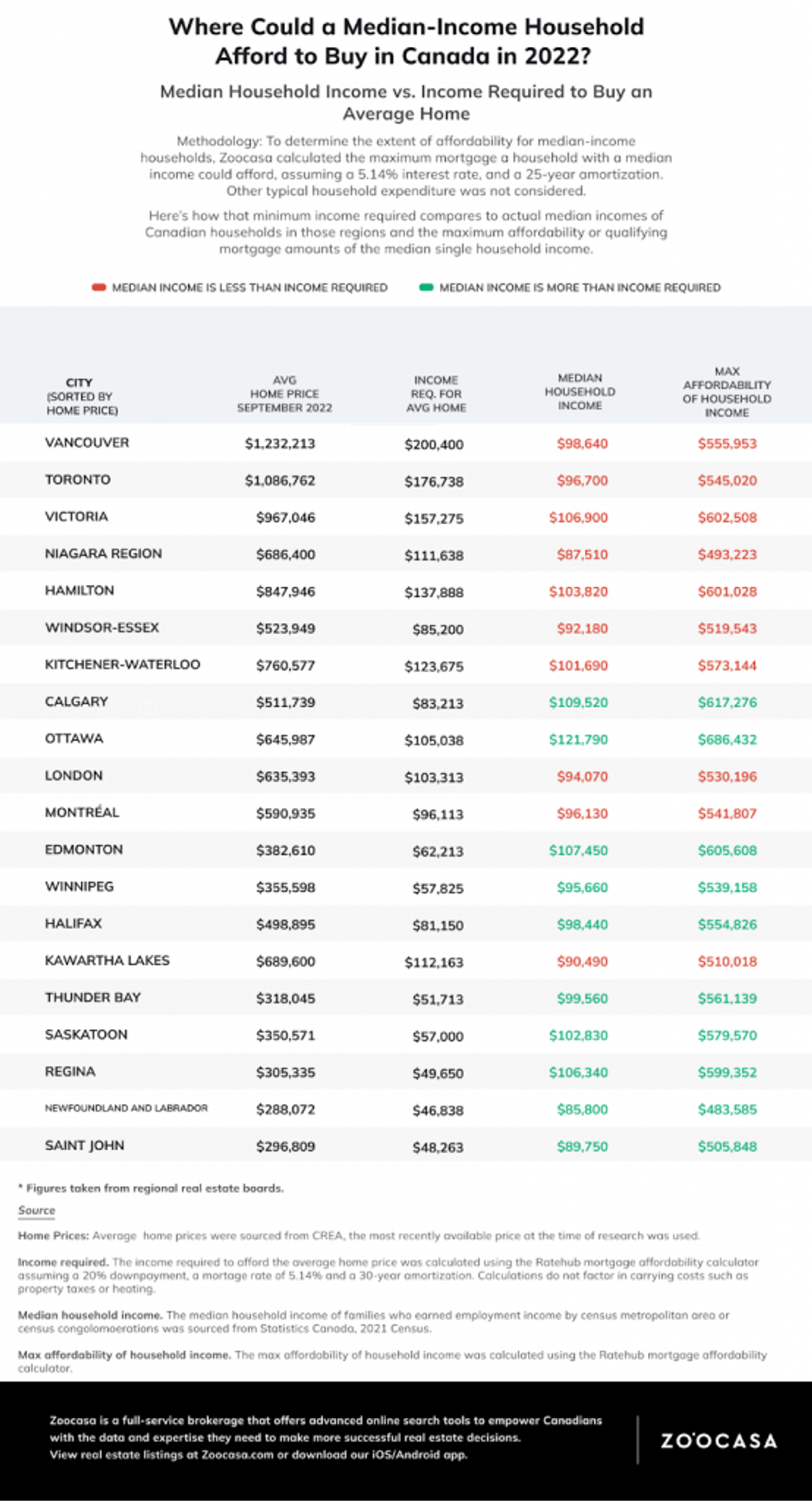Canada’s median-income Baby Boomers had it easy when it comes to purchasing a home.
Now, even those with relatively high household earnings can’t seem to afford to enter the country’s housing market -- especially in places like Toronto and Vancouver.
While Canada’s home prices have softened this year with the dialing back of the drama in the real estate market, the national benchmark price is still 3.7% higher than it was last year, at $766,600. In many urban centres across the country, year-over-year home prices are still up from 2021. Furthermore, perpetually climbing interest rates mean that -- despite softening prices -- it may actually be more difficult for median-income Canadian households to enter the market due to an inability to secure a mortgage.
Needless to say, the collective sentiment among would-be Canadian homeowners isn’t exactly one of enthusiasm when it comes to real estate.
But there’s hope -- especially if you're willing to relocate. Today, Zoocasa released a report that offers insight as to where median-income families can still purchase a home. The real estate company compared average home prices in 20 different cities across Canada and the median income in those cities to the income required to buy.

As it turns out, there are still some markets that are considered attainable -- 12, to be exact.
Of the 20 markets analyzed, buyers with a median household income could afford to buy in (slightly) over half of them. Coming as zero surprise, Ontario is one of the least affordable provinces to purchase real estate. However, Ottawa, Thunder Bay, and Windsor/Essex are the most affordable cities. In these spots, the median income is higher than the income required for the average home by over $16,000, $47,700 and $7,000 respectively.
In the notoriously pricey City of Toronto, you would need an income of $176,738 to afford the average home costing $1,086,762 -- 82.8% more than the median income of $96,700, highlights Zoocasa. As expected, British Columbia follows suit on the affordability front, especially in the province’s major markets. Homes in Vancouver currently cost $123,213 and would require the average household to earn $200,400, a figure that’s more than double the median income of $98,640. Yikes.
Those looking for affordability may want to turn their eyes to the Prairies; the region makes up half of the affordable areas in the country. In each of these markets, the average home could likely be purchased with the median income, according to Zoocasa. Regina is the most affordable city on the list; here, the average home costs $305,550 and requires an income of $49,650 to afford. Meanwhile, the city’s median income is well above that, exceeding $100,000. Regina is followed by Edmonton, and “The Paris of the Prairies,” Saskatoon. In both spots, the median incomes around $45,000 higher than the required income for the average home.
While the prospect of living in the Canadian Prairies may not be the most exciting one for would-be homeowners in the country's priciest cities, it all comes down to priorities. If you crave the great Canadian dream of homeownership enough, you may just have to move to get your white picket fence.






















